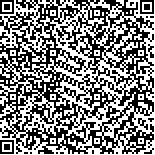本文已被:浏览 4323次 下载 5348次
投稿时间:2017-05-10
投稿时间:2017-05-10
中文摘要: 科学文化本质上是一套价值体系、行为准则和社会规范,是人们自觉或不自觉遵循的生活态度和工作方式,其影响所及远远超出科学共同体本身,对于塑造现代社会、促进科技发展乃至推动一个国家和民族的现代化进程有着举足轻重的重要作用。在科学文化的形成与演进过程中,科学文化与人文文化的融合,从小众文化向大众文化的嬗变,普适原则基础上呈现出的民族特色,无不彰显着科学文化的强大张力,进而对于世界科技强国建设发挥着重要的支撑作用。从这个意义上来说,科学家有义务着力培育并弘扬科学文化,而科学文化研究也应该适度地把学术研究与政策需求有机结合起来,这是科技界、学术界乃至社会公众必须共同担当的时代责任。
Abstract:The culture of science in nature, is a system of values, behavioral rules, and social regulations, and also an attitude to living, a way to working followed by the people consciously or unconsciously. It plays an important role in promoting progress of modernization of nations and peoples, whose impacts out distanced scientific communities. In its formulation and evolution, the culture of science has been fusing with the culture of humanity and art, becoming a megaculture with mass public engagement, rather than the scientists' minority culture. Based on universal principles, the culture of science shows characteristics of different peoples, reflecting great tensions that support to build a global power of science and technology. From this view, scientists have the responsibility to nurture and develop culture of science, meanwhile, researches on culture of science should properly combine academic studies with requirement of policies. Consequently, it is the responsibility of building culture of science that needs to be undertaken by scientific and academic communities, and also the public in society.
文章编号: 中图分类号: 文献标志码:
基金项目:
| Author Name | Affiliation |
| Wang Chunfa | China Association for Science and Technology, Beijing 100031, China |
引用文本:
王春法.培育科学文化 建设世界科技强国[J].中国科学院院刊,2017,32(5):453-460.
Wang Chunfa.Nurturing Culture of Science, Building a Powerful Country in Science and Technology around the World[J].Bulletin of Chinese Academy of Sciences,2017,32(5):453-460.
王春法.培育科学文化 建设世界科技强国[J].中国科学院院刊,2017,32(5):453-460.
Wang Chunfa.Nurturing Culture of Science, Building a Powerful Country in Science and Technology around the World[J].Bulletin of Chinese Academy of Sciences,2017,32(5):453-460.


